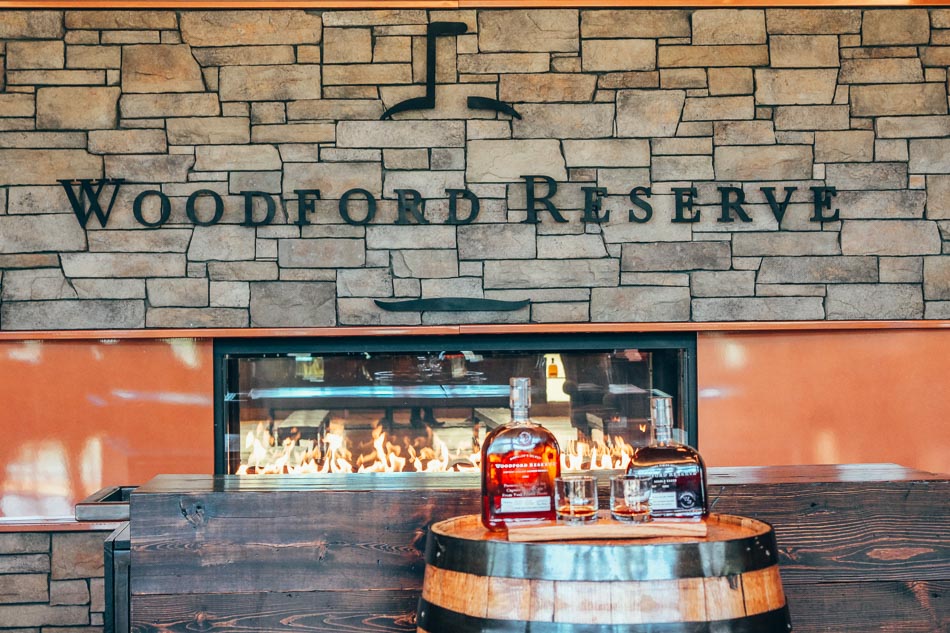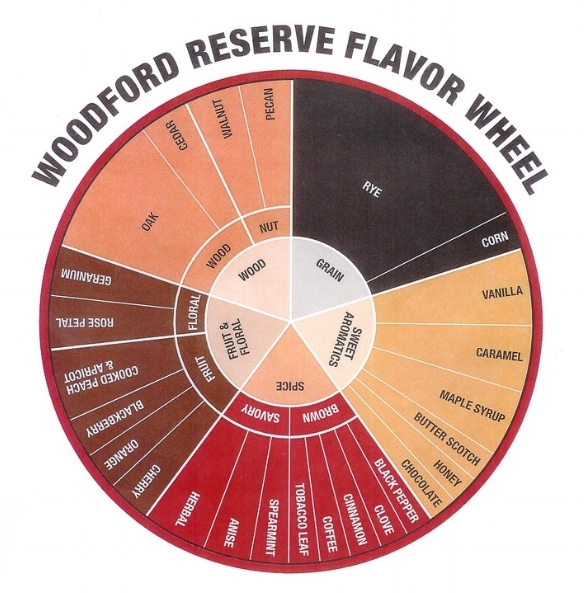Bourbon Tasting 101: A Kentuckian’s Guide
Ahh, bourbon: the taste of my childhood. I know that … sounds weird, but growing up in Kentucky, bourbon is baked into holiday goods and confections, and eating a handful of bourbon balls (or making them from scratch) at a young age isn’t that weird. The vanilla- and caramel- notes of bourbon pair perfectly with chocolate and pecans, and growing up, that’s what I associated it with: delicious childhood treats.
It wasn’t until I was an adult that I learned to taste bourbon on its own, and through visits to bourbon distilleries, I learned about the “Kentucky Hug”, how to properly sniff bourbon, how to add water to perfectly enhance the flavor, and more. Though if I’m being honest, bourbon still tastes best to me in the form of a bourbon ball, though that may just be nostalgia!
Whether you’re just getting curious about bourbon as a purveyor of tasty whiskey, or you’re hoping to visit distilleries on the Kentucky bourbon trail, this guide to bourbon tasting will help you to appreciate bourbon both at home and when tasting bourbon at a distillery!
Considering a trip to Kentucky to taste bourbon? These posts will help you plan you trip!
- 9 Delicious Distilleries in Louisville, Kentucky, from Bourbon to Brandy
- Louisville Weekend Trip: The Perfect 3-Day Itinerary
- Where to Stay in Louisville, Kentucky (and Where NOT to): a Local’s Guide
- The 17 Best Bourbon Bars in Louisville, Kentucky
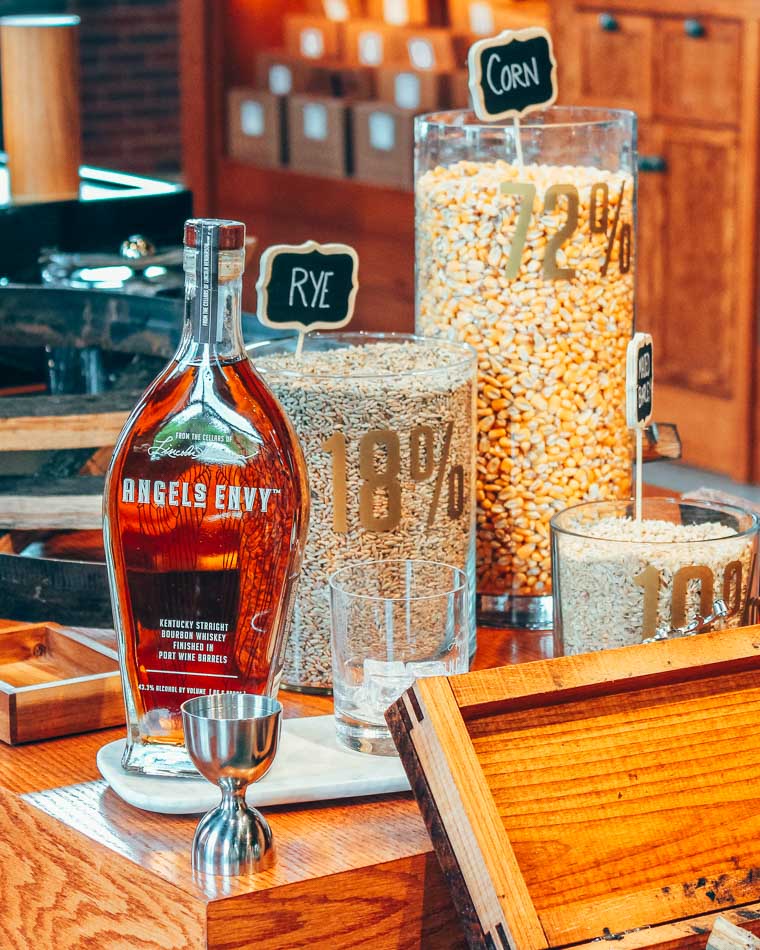
Bourbon Tasting 101
First, the basics: what is bourbon?? Legally, Bourbon is a type of whiskey that is aged in new charred oak barrels and made with at least 51% corn. Bourbon is not a location-specific product, but to be considered Kentucky bourbon, it must be produced in the state (both distilled and aged).
You can find bourbon produced elsewhere, but Kentucky bourbon is hands down the best tasting bourbon. And that’s not just us being conceited: it’s actually because of Kentucky’s naturally limestone-filtered water, which makes our bourbon taste sweeter.
The differences in the way bourbon tastes typically comes from two primary factors. First, there is the mash recipe used: the percentages of rye, malted barley, wheat, and even corn vary from bourbon to bourbon.
Second, there’s the amount of toast or char on the barrel and the amount of time the bourbon spends in it. The aging of the high-proof distilled mash inside of the toasted barrel is what produces the sweet syrupy taste and caramel color of bourbon, as the spirit breaks down the sugars from the toasted oak.
Playing with those two factors can result in vastly different bourbons. A bourbon made with a high percentage of corn and a lightly toasted barrel will likely taste sweeter than a bourbon made with a high percentage of rye and a dark, charred barrel.
And to add another element, many bourbons are finished, meaning they are aged for a second time in another barrel – that could be a second oak barrel, or perhaps a barrel that has soaked up another spirit, such as port or sherry. Finished bourbons are often smoother, sweeter, and better for sipping – especially when paired with chocolate (which you’ll find at many bourbon distilleries)!
And to add more complexity, some bourbons even include toasted wood staves thrown into the barrel to add another level of complexity.
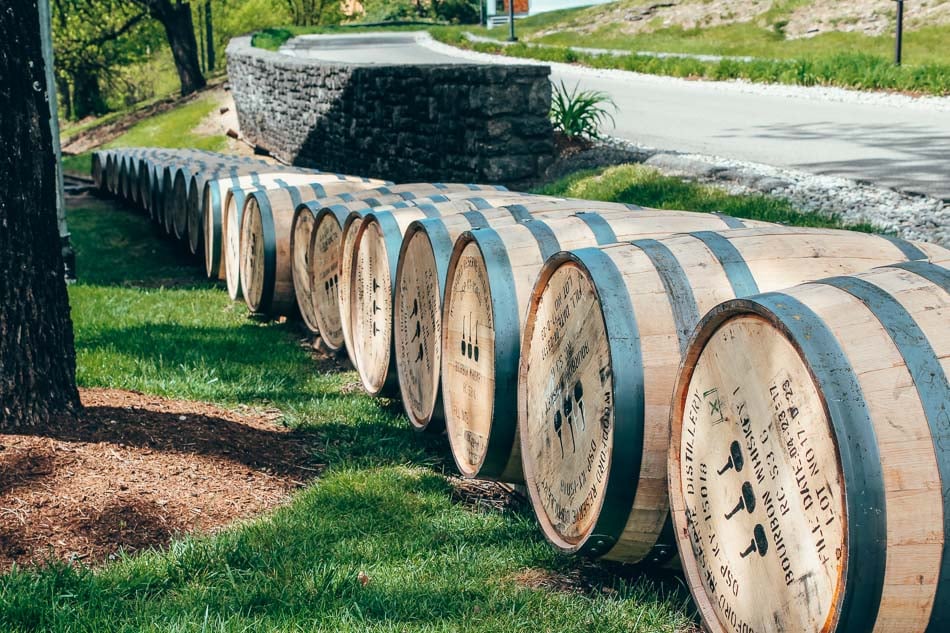
Bourbon Distilling 101
Many of the tasting notes you pick up on when bourbon tasting come from the distillation process, so it’s helpful to have a basic idea of the steps involved. We’ll give you a short overview.
Distilling a bourbon is not an easy process. First, you take the mash blend – a mix of corn, rye, wheat, and so on – and ferment it. That gives off an absolutely heavenly scent of baking bread which permeates every bourbon distillery, and it’s honestly the best part of going bourbon tasting on the Kentucky bourbon trail!
Next, that sour, fermented mash is strained and distilled, which results in a clear white alcohol that’s incredibly strong. This is often referred to as “white lightning” or “white dog.” It’s … closer to moonshine than what you’d think of as bourbon, and while it’s definitely drinkable, it’s a bit of an aquired taste!
Next is the defining step: that white lightning is aged in a brand new, toasted white oak barrel. While it ages, the caramelized wood sugars seep into the liquor to add flavor, complexity and that iconic caramel color.
The barrels sit in a “rick house” that’s insulated but left to the mercy of the elements, and the swings from hot to cold expand and contract the barrels, which allows the alcohol inside to evaporate. This is known as the “Angel’s Share” and it’s why a glass of bourbon has a much lower proof than a glass of white lightning!
Now that you know the basics, let’s go a little deeper and learn how to properly taste bourbon.
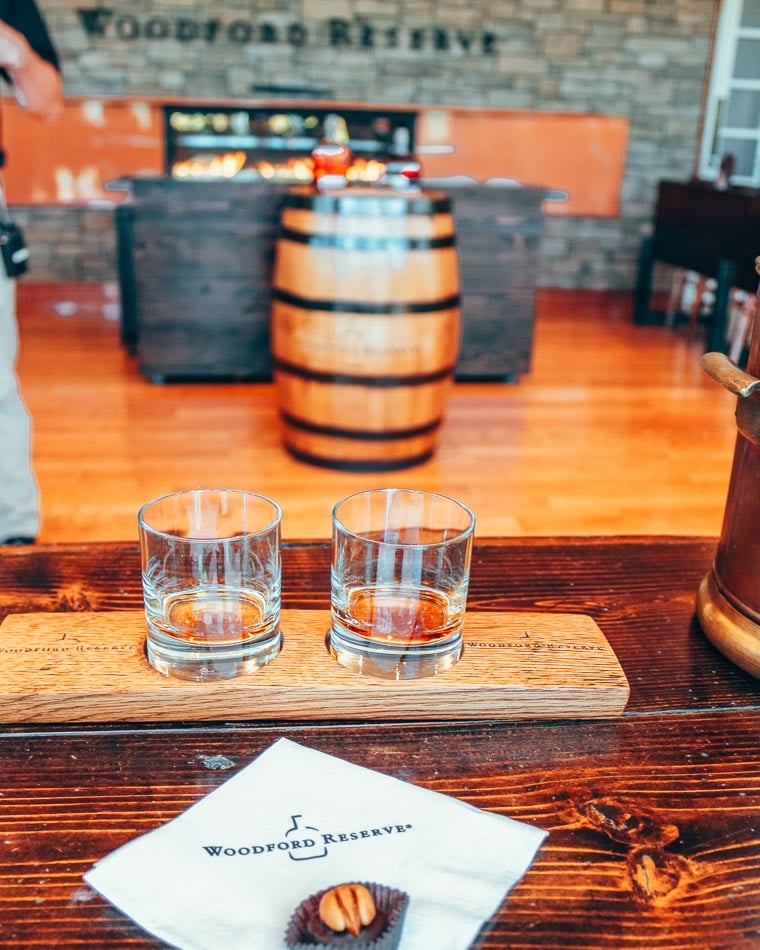
How to Taste Bourbon
Now before we start ordering bourbon flights and savoring the “Kentucky hug”, AKA that good warm burn you get while sipping bourbon, it might be beneficial to get a few pointers on how to properly taste the raw spirit. Because if this is your first experience with bourbon, you’re gonna want to acclimate your palate.
The most important part of a tasting is the connection a scent or flavor can bridge in your mind. So even if it sounds a little crazy, don’t be shy and give an honest opinion on what you’re experiencing.
The first step is the easiest! Notice the color. Color comes mostly from the barrel and age, so although it may look all the same at first glance, compare different bourbons from one another. Some might appear slightly more straw color, while others are deep orange and dark amber in color. Typically, lighter colors are lighter in taste.
Second step is just as easy, sniffing the bourbon. Most proper bourbon glasses will be tapered toward the top to funnel the aromas.
Now don’t stick your nose deep into the glass or you risk burning your nose with the heavy alcohol vapors.
Instead, give a little distance between your nose and the glass and take a light whiff, leaving your mouth open as you breathe in. You can even plug each nostril and smell it through one at a time. Try to notice what you smell: Is it Sweet? Or spicy? Or maybe it kinda reminds you of smoked bacon – all valid responses, I promise!
And next we finally get to taste the dang thang! Take a small sip and swish it around your mouth without initially swallowing. Hit all the taste buds – this is what we call the Kentucky Chew, and it accumulates your mouth to the strength of the bourbon.
And then swallow your first sip. That first swish might feel a bit strong, but over time you’ll start to notice it burns a little less and the actual flavors of the bourbon will start to pop out. Notice that warmness down your throat and stomach? That’s what we call the Kentucky Hug, we’re all about that southern hospitality after all.
And finally, and most importantly, we keep sipping to taste for flavor! Like I said before, the point of tasting is to make those bridges in your mind. It can be very difficult at first to find the words to describe what you’re experiencing in your glass, so I recommend using a helpful flavor wheel like the one below.
This wheel is an incredible tool to help map your thoughts by starting from broad categories and working your way to the outer circle for more detailed notes. Start at the center of the circle where the categories are more broad and easier to identify, does your bourbon have a sweet or grain flavor? Now move a little deeper, is this grain flavor more like a sweet corn or like a spiced rye bread?
Conducting a proper tasting can take a lot of practice and develops over time. So don’t get discouraged if you need a little extra homework, because I mean isn’t this the best kind of homework?
Woodford Reserve has a very helpful guide to conduct a tasting at home. Here in Kentucky it’s very common to host tastings, every guest brings a different bottle of bourbon and the group tastes and evaluates together.
Bourbon Tasting Notes
There are a lot of notes you can pick up in bourbon, which range from the sweet vanilla and butterscotch notes picked up by the caramelized wooden oak barrels all the way to tobacco leaf , apricot and even spearmint.
Most bourbon tasting notes are in the range of delicious edible things, and also serve as a helpful guide to pair your bourbon with food – my personal favorite way to of enjoy bourbon!
Sweet Aromatics
Let’s start with the flavor notes that are easiest to identify in a glass of bourbon. Sweet tasting notes of vanilla, caramel, butterscotch, toasted marshmallow, chocolate and maple are foremost in many glasses of bourbon (especially finished bourbons, which have been barrel-aged twice).
These tasting notes, as well as the caramel color of the bourbon, come directly from being aged in white oak barrels, thanks to the caramelization of the wood sugars achieved by toasting or charring the barrels.
The toast of the barrel can have a strong effect on your bourbon’s sweet tasting notes. Think of it like the range of caramel: the more the sugar is heated, the darker the color and the more bitter the taste. Toasted barrels are much the same, and the light toast of a bourbon like Woodford Reserve will taste sweeter than a darker charred barrel, like Bulleit. This short article on charred barrels by Rabbit Hole Distillery is a good introduction to barrel char levels!
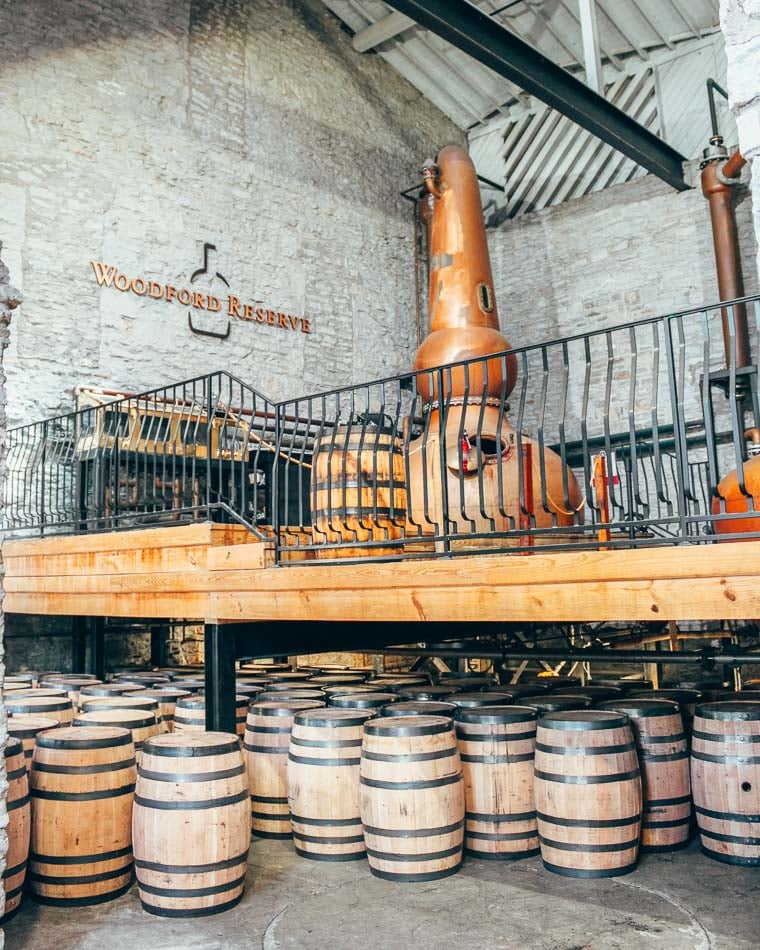
Wood
In addition to the caramelization of the wood sugars that gives bourbon the sweet, aromatic notes of vanilla and caramel, the wood imparts another flavor note: wood! You may be able to taste a creamy, buttery note of oak in your bourbon.
But while all bourbons must be legally toasted in a new, unused white oak barrel, some distilleries take it a step further and add more wood to their bourbons. This may be in the form of a finished bourbon, which involves aging the barrel in a second oak barrel – sometimes another new, toasted barrel like in the case of Woodford Double Oaked (my favorite dessert bourbon) and sometimes in a barrel that’s been used already to age something like port or wine, such as Angel’s Envy finished bourbons.
Another technique distillers may use is to add wood staves into their bourbon barrels to age alongside the bourbon and impart additional flavor and depth. This can add nutty notes like pecan and walnut when these wood staves are used. Maker’s Mark has a line of bourbons finished with added wood staves, including Maker’s Mark 46 (my favorite Maker’s product)!
Grain
While bourbon must legally be made from at least 51% corn, the rest of its recipe varies and can include rye, malted barley, or wheat. If a bourbon mash is made from more than 51% corn, you may taste notes of creamy sweet corn.
On the flip side, if it’s a rye-forward mash, you may taste a more bitter rye taste. Yes, bourbons can taste like rye whiskey and still be bourbon! Neat, right??
Fruit & Floral
Wine drinkers may be surprised to hear that bourbons can impart fruity tasting notes! This can be due to finishing – a wine barrel finish could add notes of stone fruit and cherry, for instance – but sometimes that’s just the inherent flavor profile of the bourbon.
The perfect example is Barrel Bourbon Batch 027, which bursts with bright, juicy cherry notes. Personally, I also taste banana in bourbons like the Old Forester 1920.
Some bourbons even feature botanical notes, like geranium, rose, dill, or spearmint. Mix those bourbons with a gin for a botanical cocktail, or make a mint julep!
Spice
You may taste spice notes in your bourbon, like anise, or coffee. A sweet-forward bourbon may boast ginger, nutmeg and clove while a more rye-forward bourbon could feature bolder notes of coriander or peppercorn.
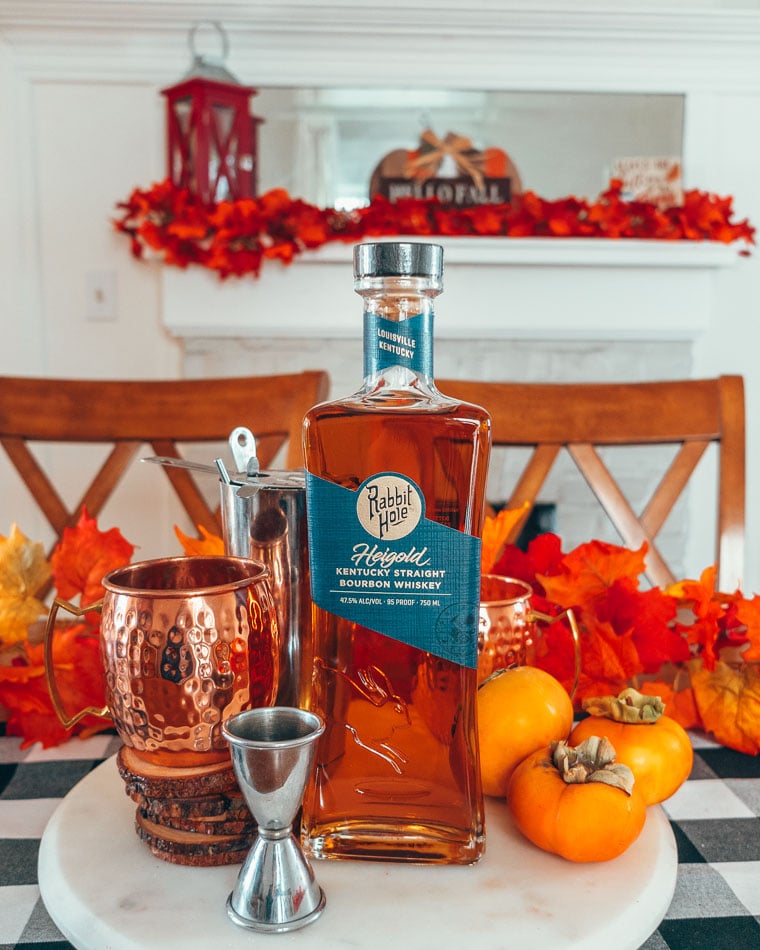
Practice Bourbon Tasting at Home
The best way to hone your palette and put your new skills to the test is by practicing! And while you’ll get loads of practice on guided tastings on the Kentucky bourbon trail, you can also start at home. This is an activity best enjoyed in a group, so invite over your favorite whiskey snobs, throw on your favorite Kentucky playlist, and get experimental.
Woodford Reserve has a helpful guide to at-home tasting which involves pairing bourbon with food to see which notes appear when eaten side by side. You’ll need to gather some materials to taste with, like chocolate, orange, maple syrup (or sorghum syrup if you’re near Kentucky!), parmesan, and dried fruits.
You’ll take a bite of food, nose your bourbon, sip, and analyze. In between each bite, clear your palette with water.
Woodford also suggests taking a “conversational pause,” which is adorable. May we suggest a rousing discussion on what makes a good or bad name for a horse running the Kentucky Derby (which is, as everyone knows, THE leading indicator of a horse’s odds)? Like, is a name like “Run Till You Drop” a major red flag, or an indicator of a strong work ethic? Likewise, is a name like “Snugglebug” an indicator of a beloved horse working hard to please its owners, or a warning sign of a horse not worked hard enough? Discuss.
If you’re extra like us, you could also pair your bourbon tasting with a meal designed to bring out bourbon-y notes, like pork with cherry sauce or stewed apricot, and a chocolate pecan pie (not to be confused with a Derby Pie™, which is completely different – as we explain in this post).
Another fantastic way to hone your nose is to use a bourbon tasting kit, like one from Nose Your Bourbon. The kits are based in strong science: sensory scientists have proven that over 80% of what we taste comes from what we smell, and so by training your nose to become more familiar with these aromas, you’ll be able to more easily detect them in a glass of bourbon. Practice by nosing your bourbon, nosing an aroma, then sipping and “chewing” your bourbon.
In either case, be sure to have a box of bourbon balls on hand. It’ll help you appreciate bourbon more, but also, they’re just freakin’ delicious. And if you’re anything like me, they might just become your favorite way to taste bourbon! (Which is super valid – they do, in fact, hand these out at distilleries during tastings!)
Now that you’re a bourbon pro, why not start planning a visit to Kentucky? We’ve got a few posts to help you plan your trip:
- 9 Delicious Distilleries in Louisville, Kentucky, from Bourbon to Brandy
- Kentucky Derby Tips: The Ultimate First-Timer’s Derby Guide (by a local)
- Where to Stay in Louisville, Kentucky (and Where NOT to): a Local’s Guide
- The 17 Best Bourbon Bars in Louisville, Kentucky



